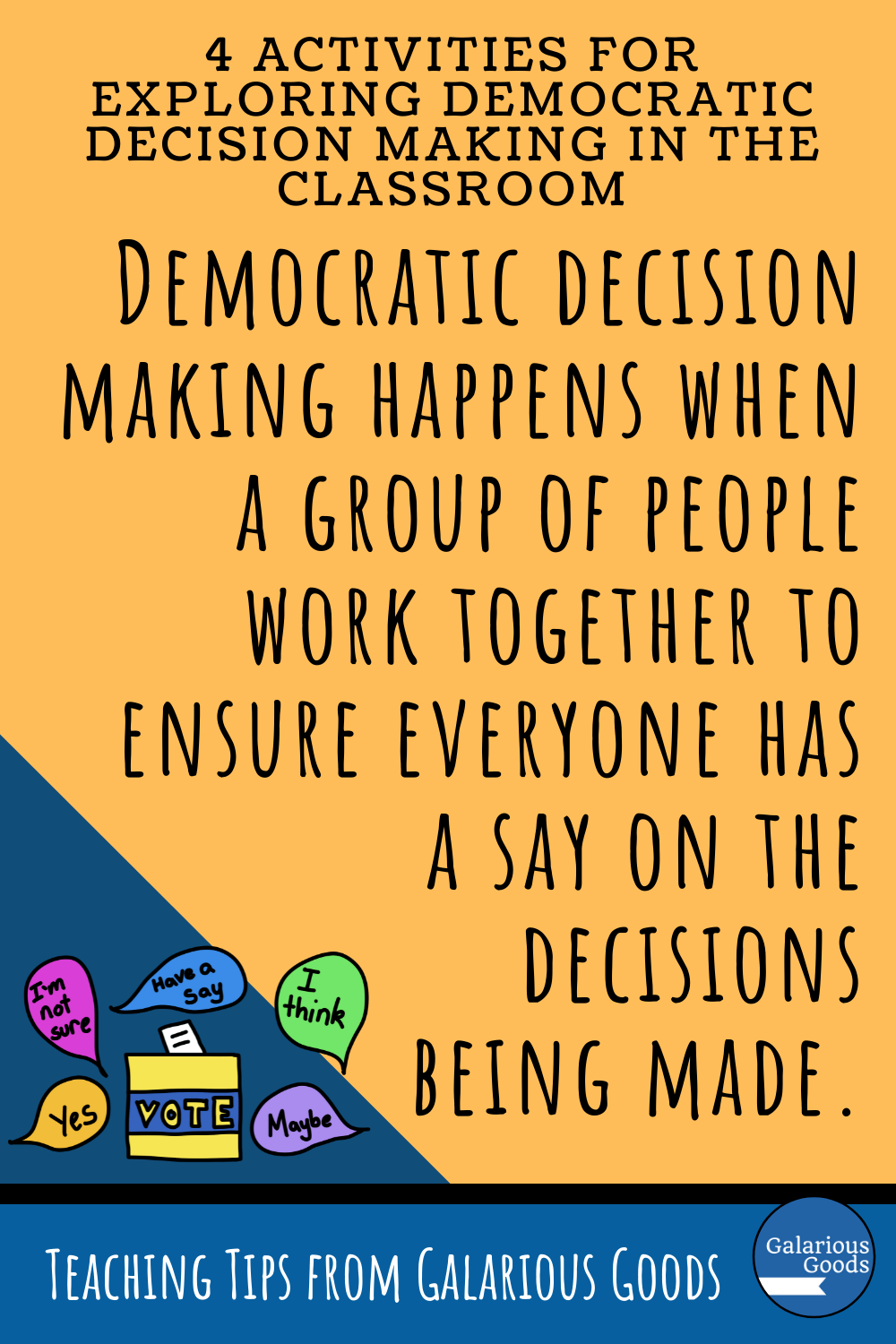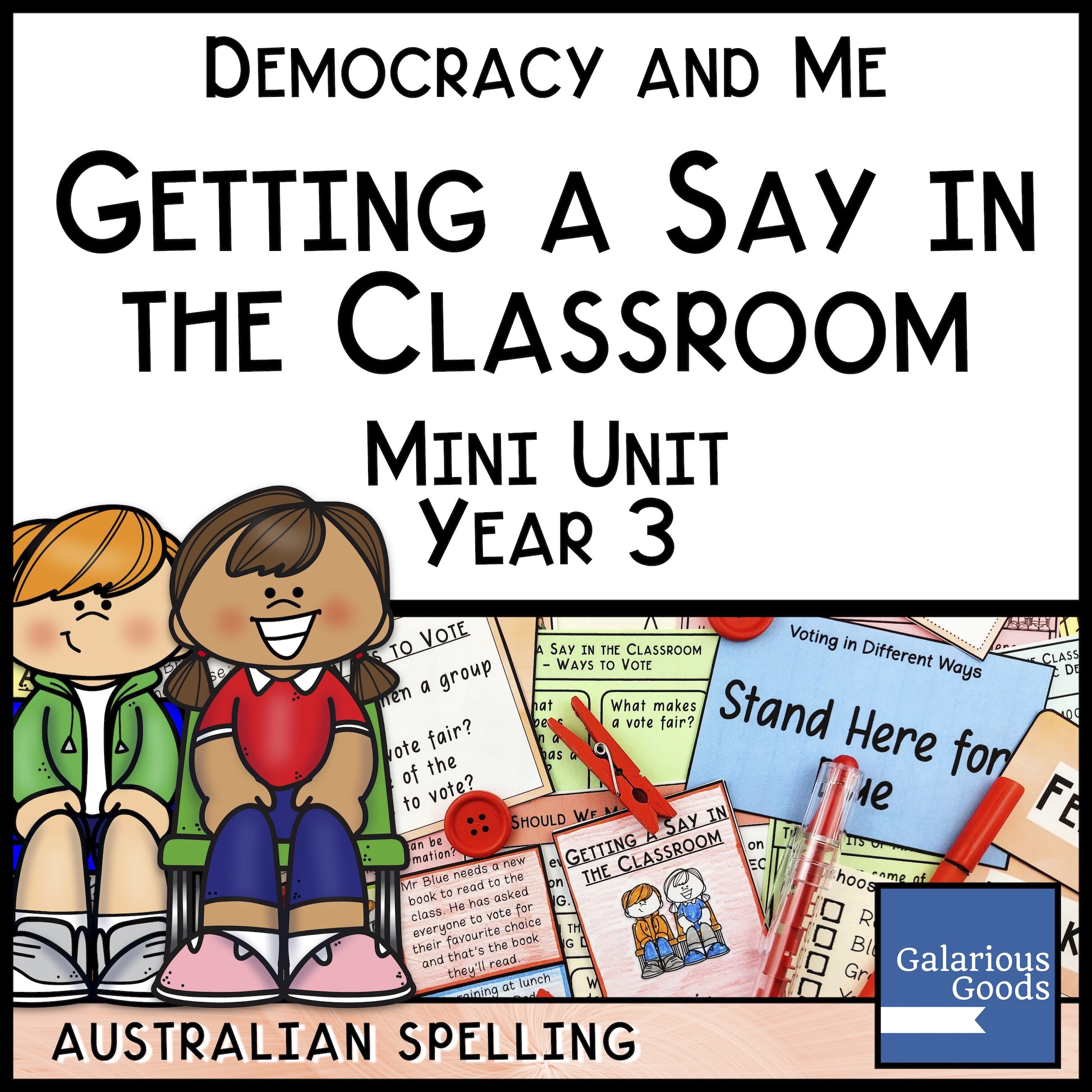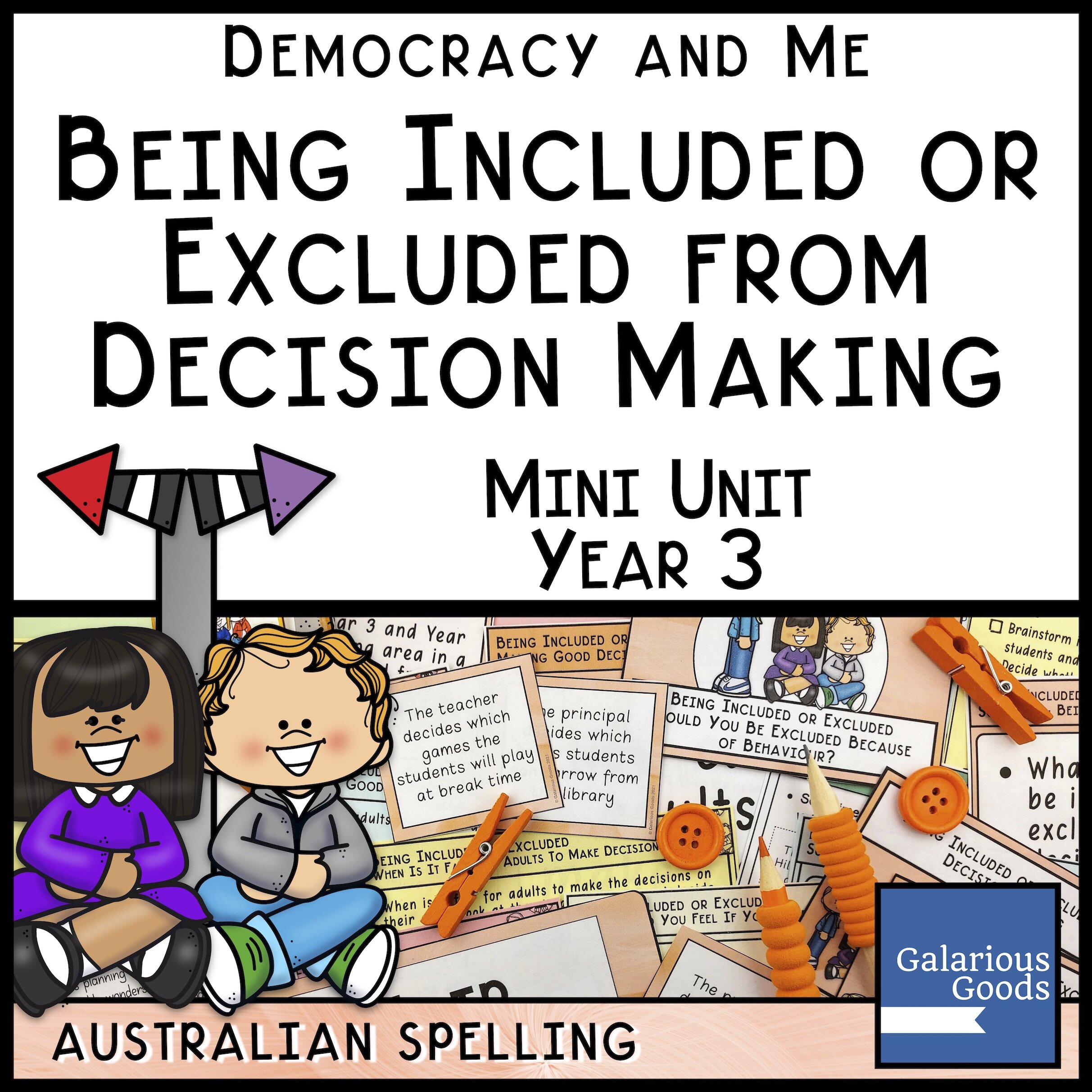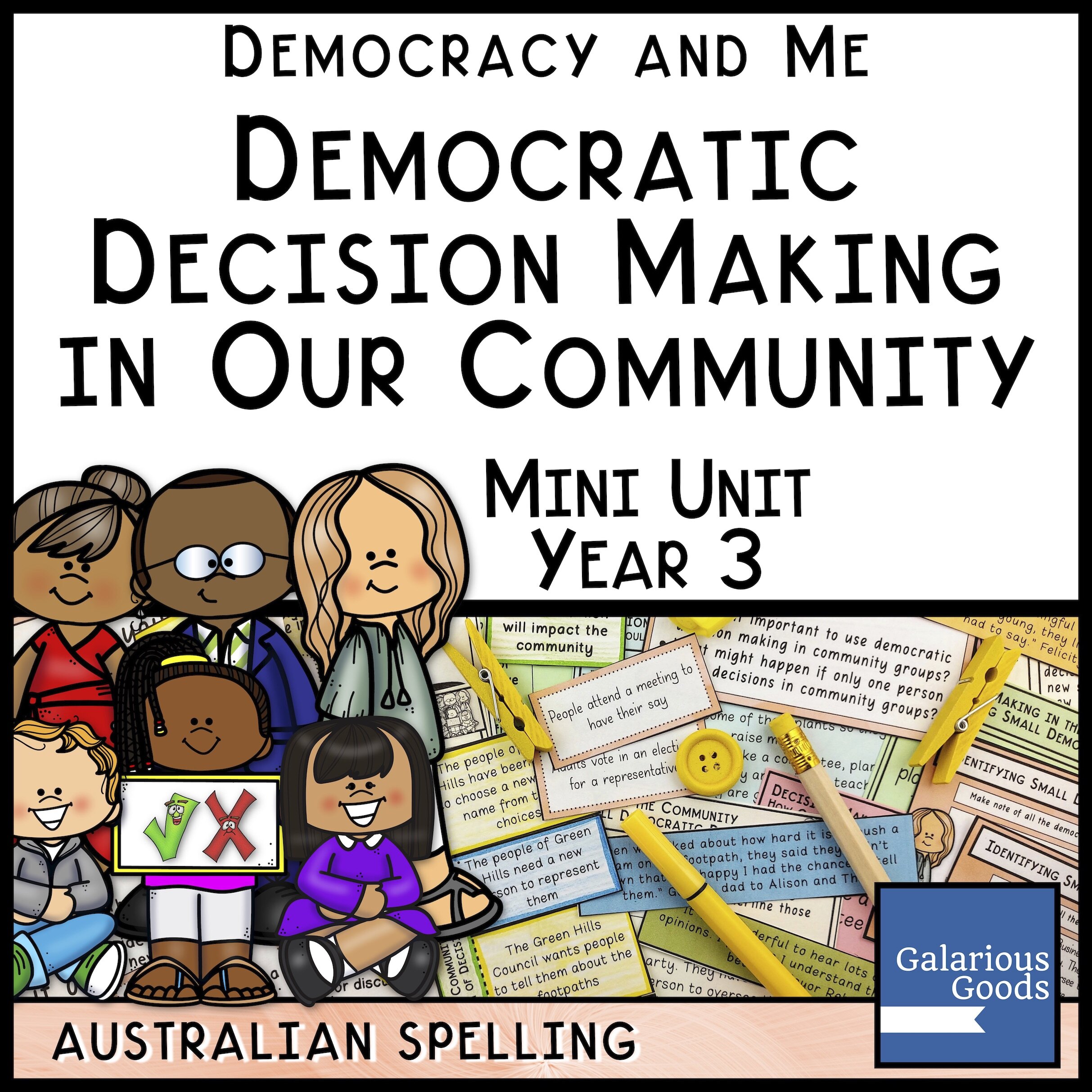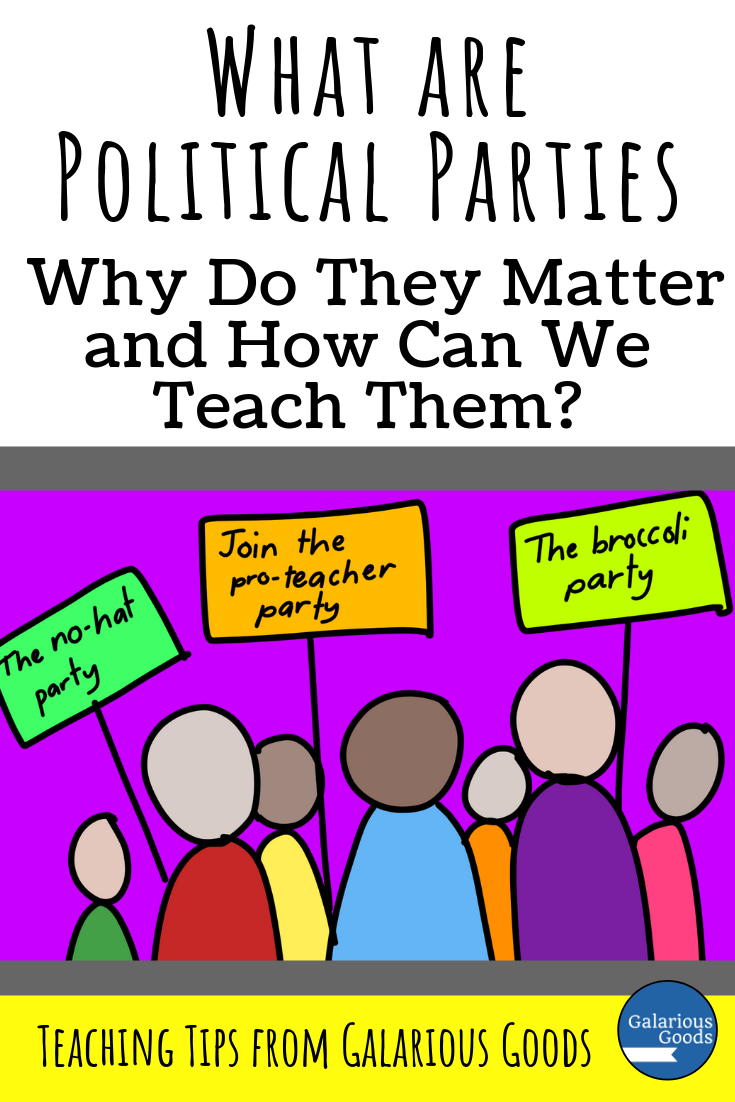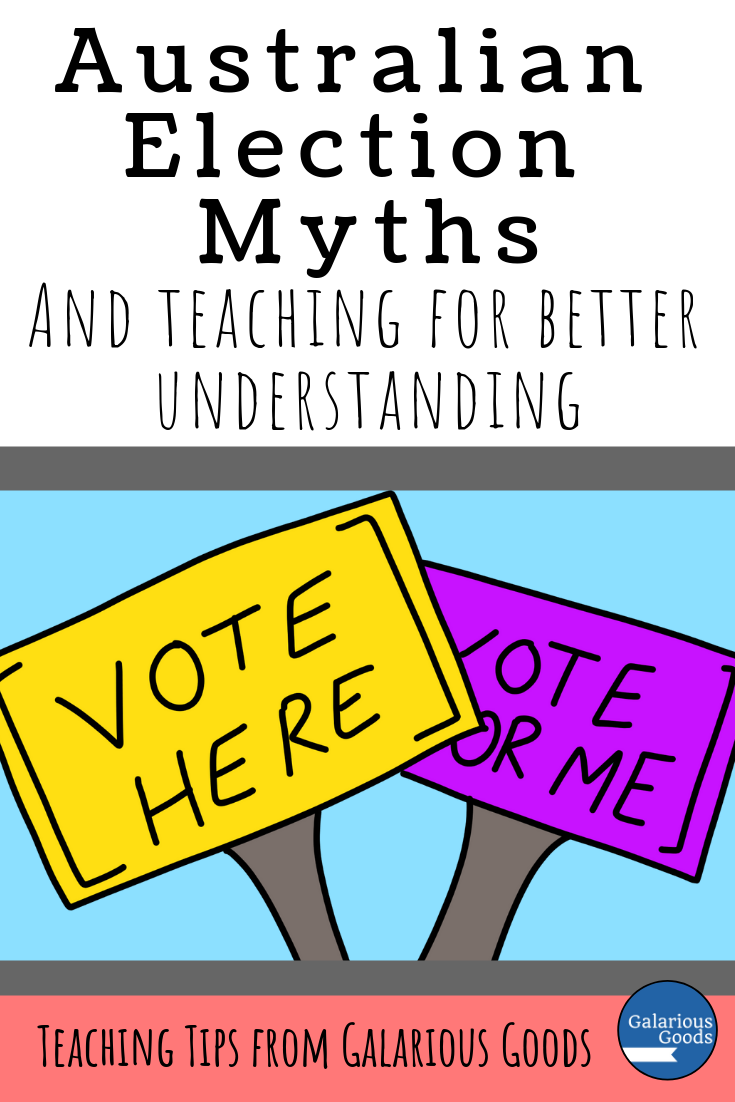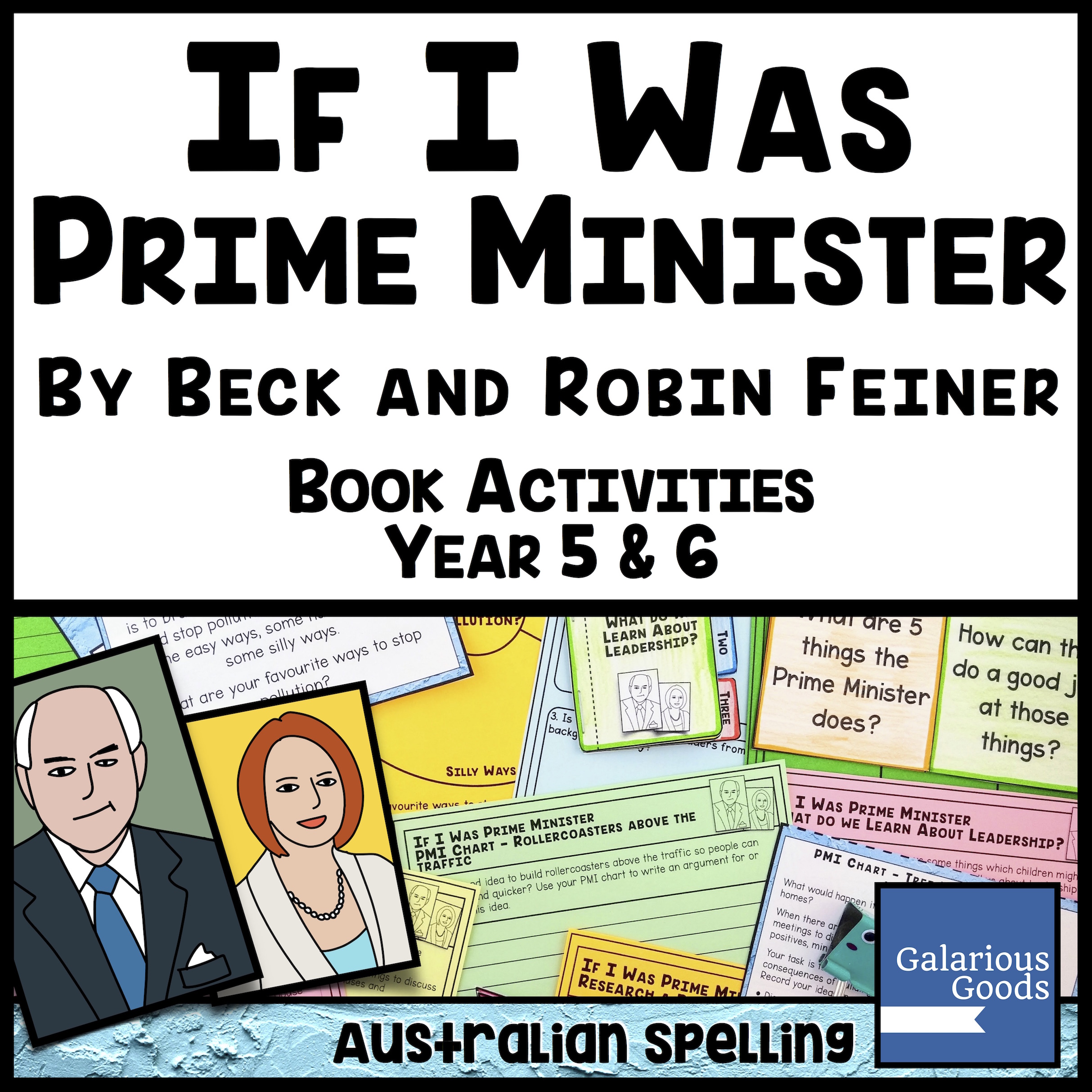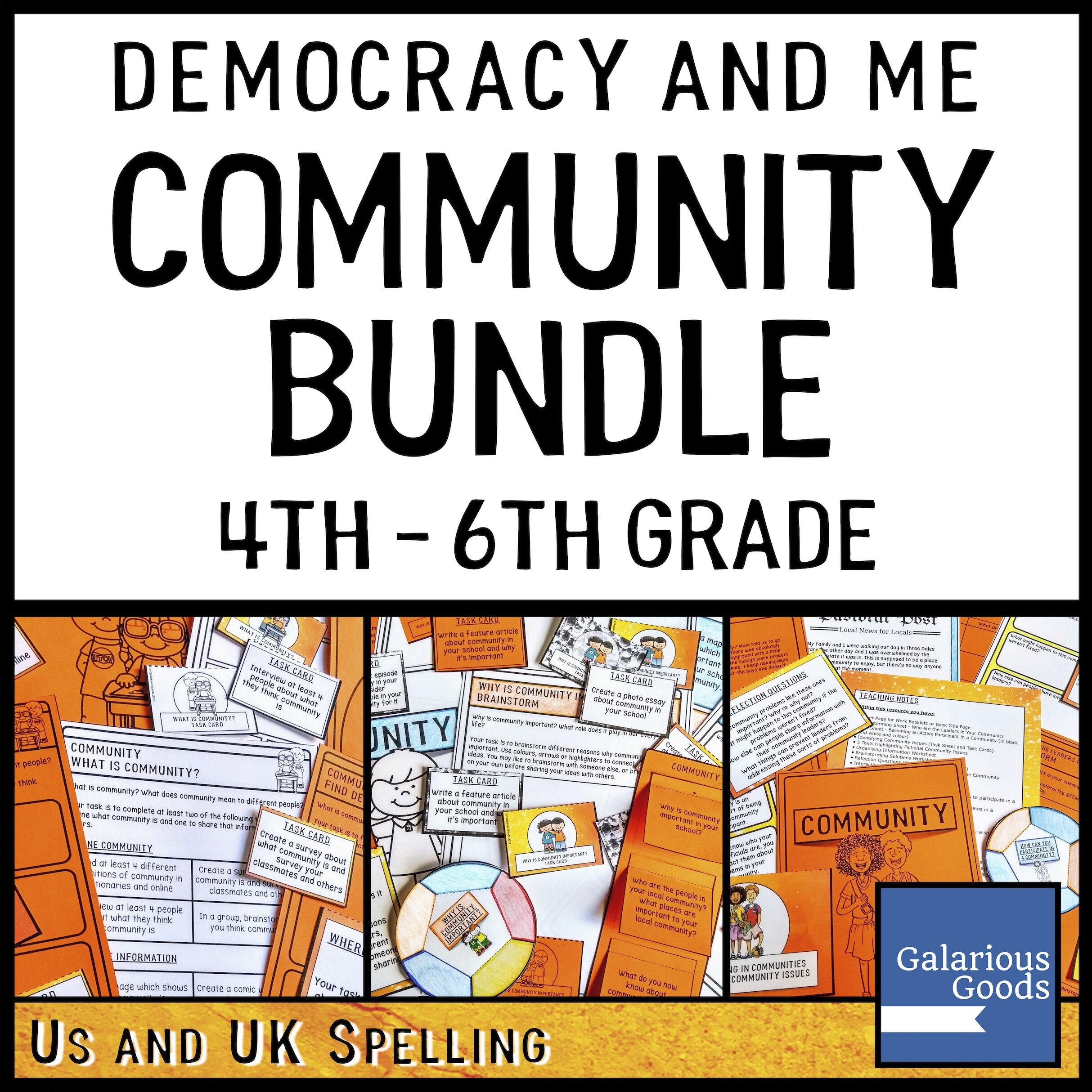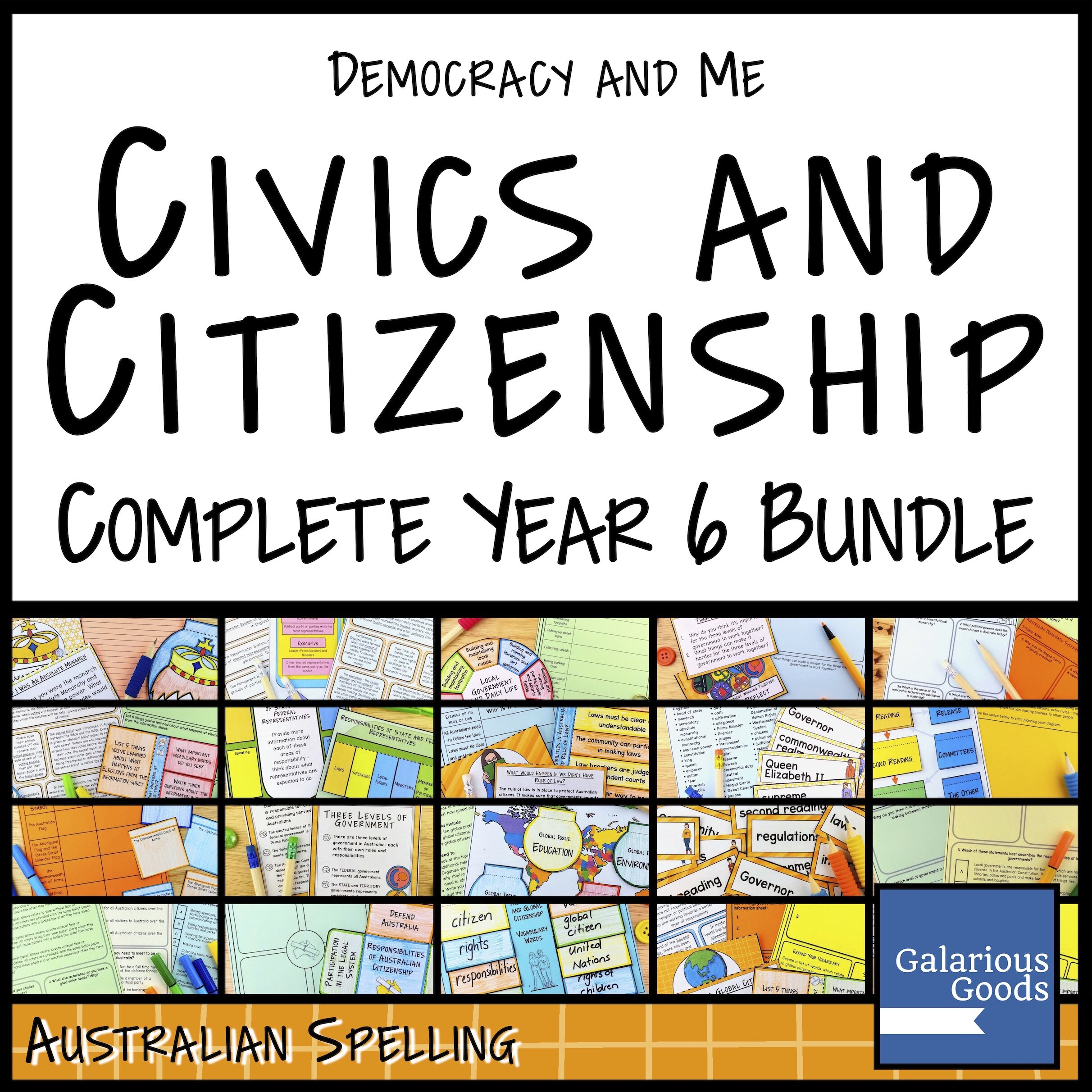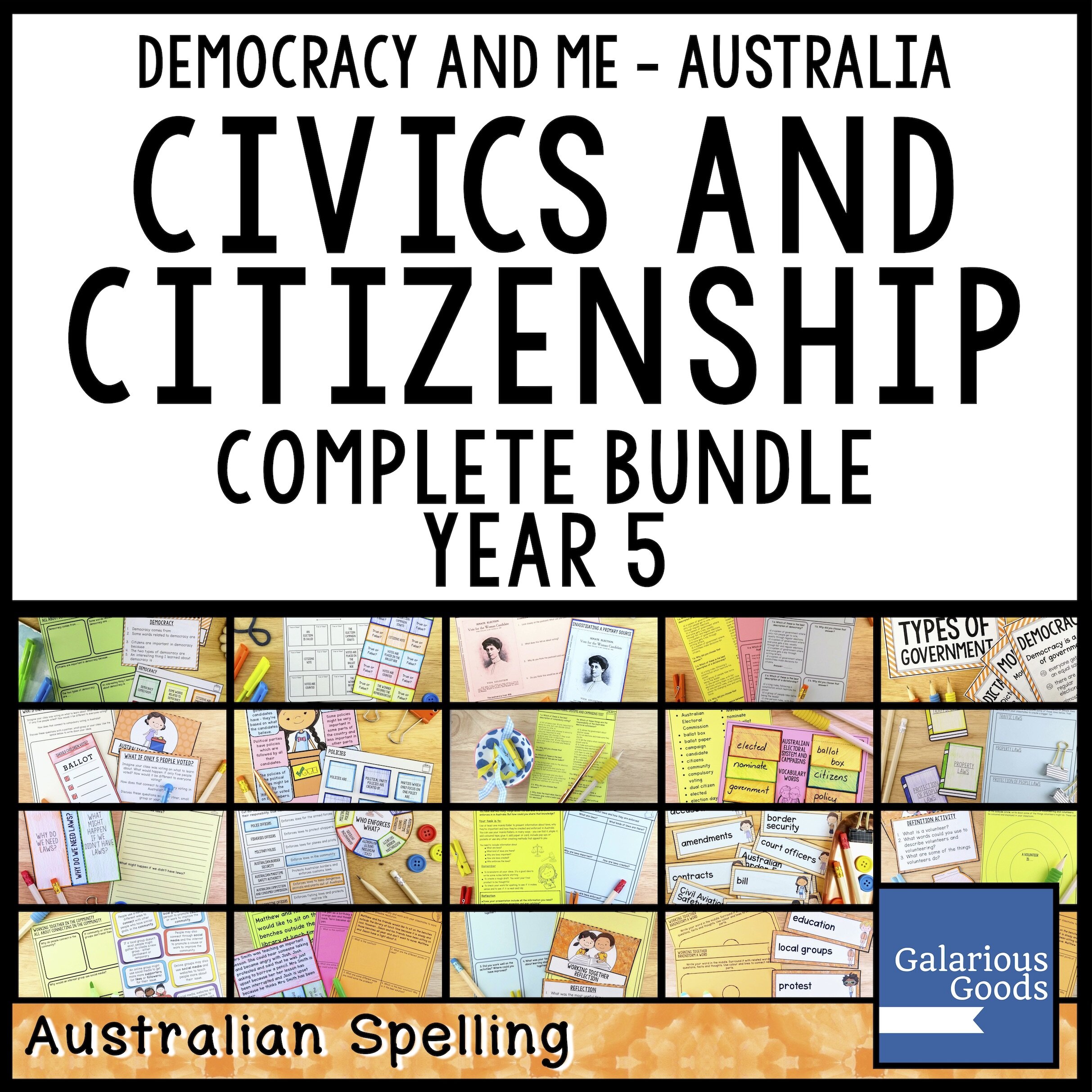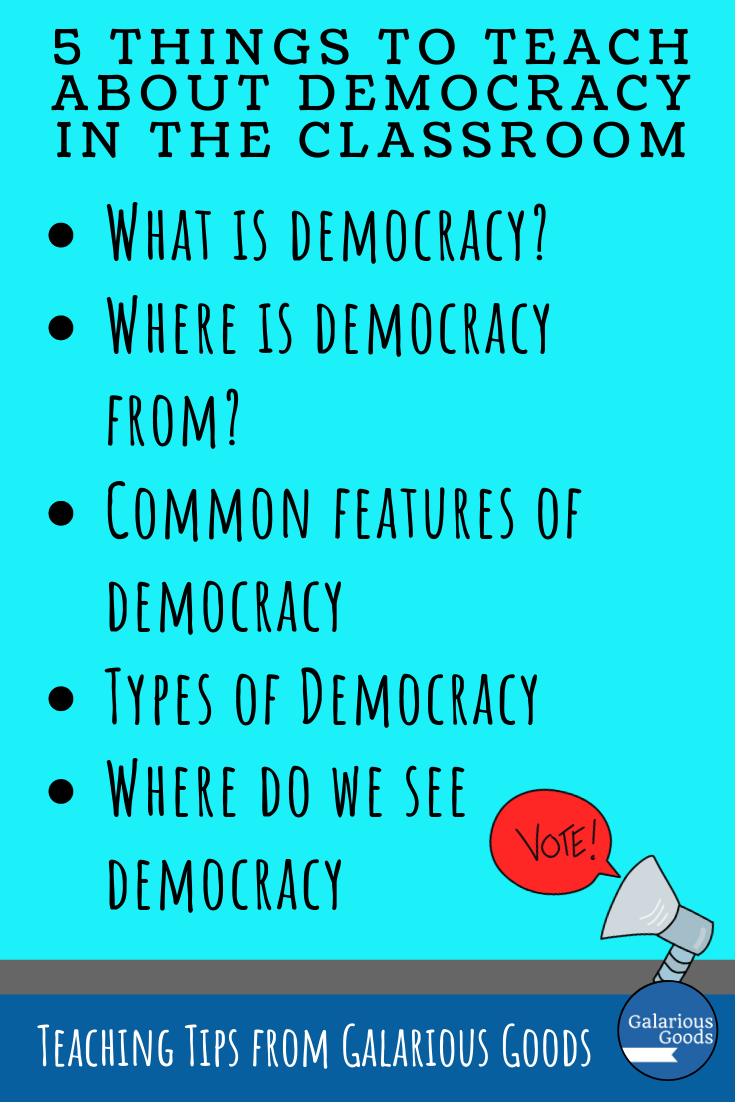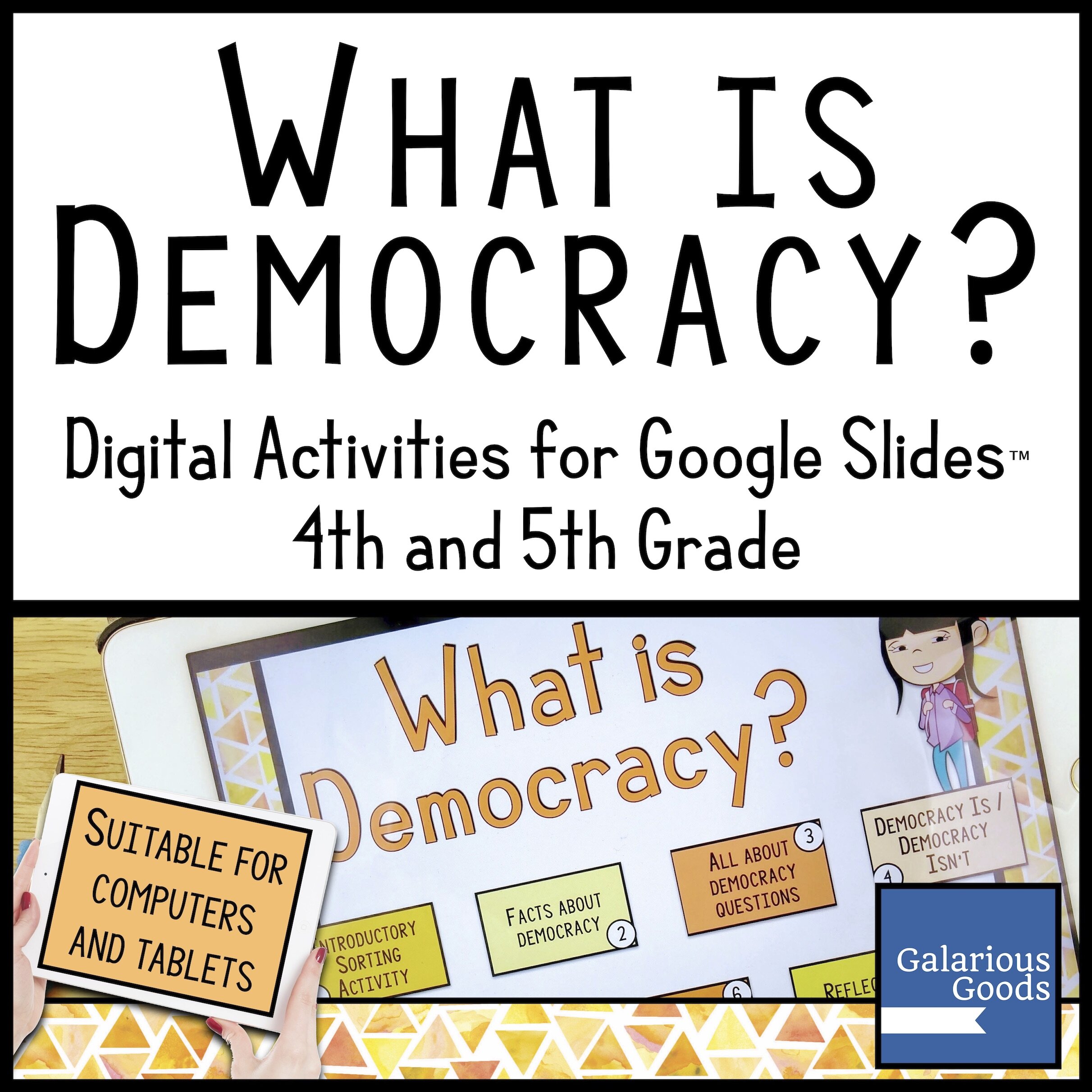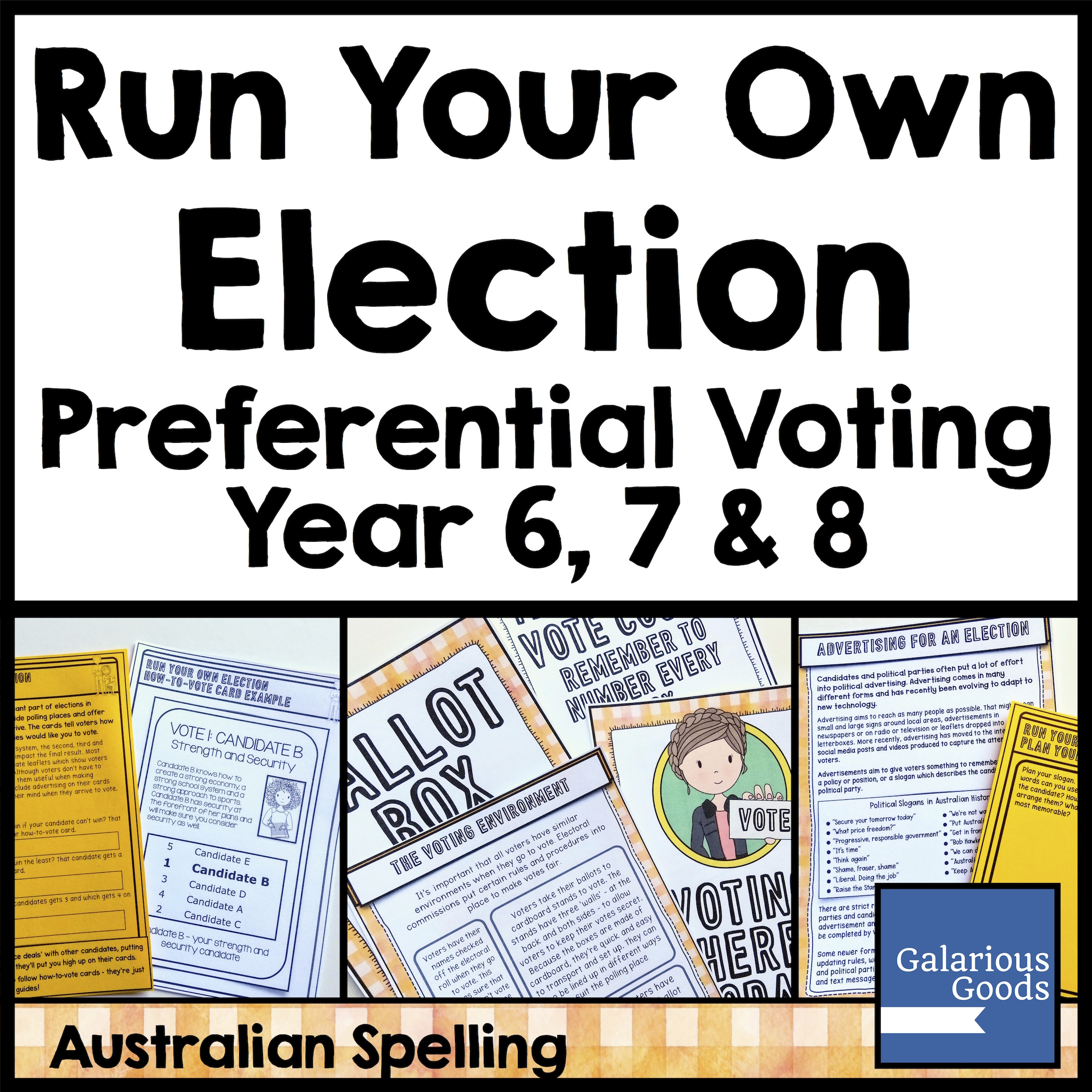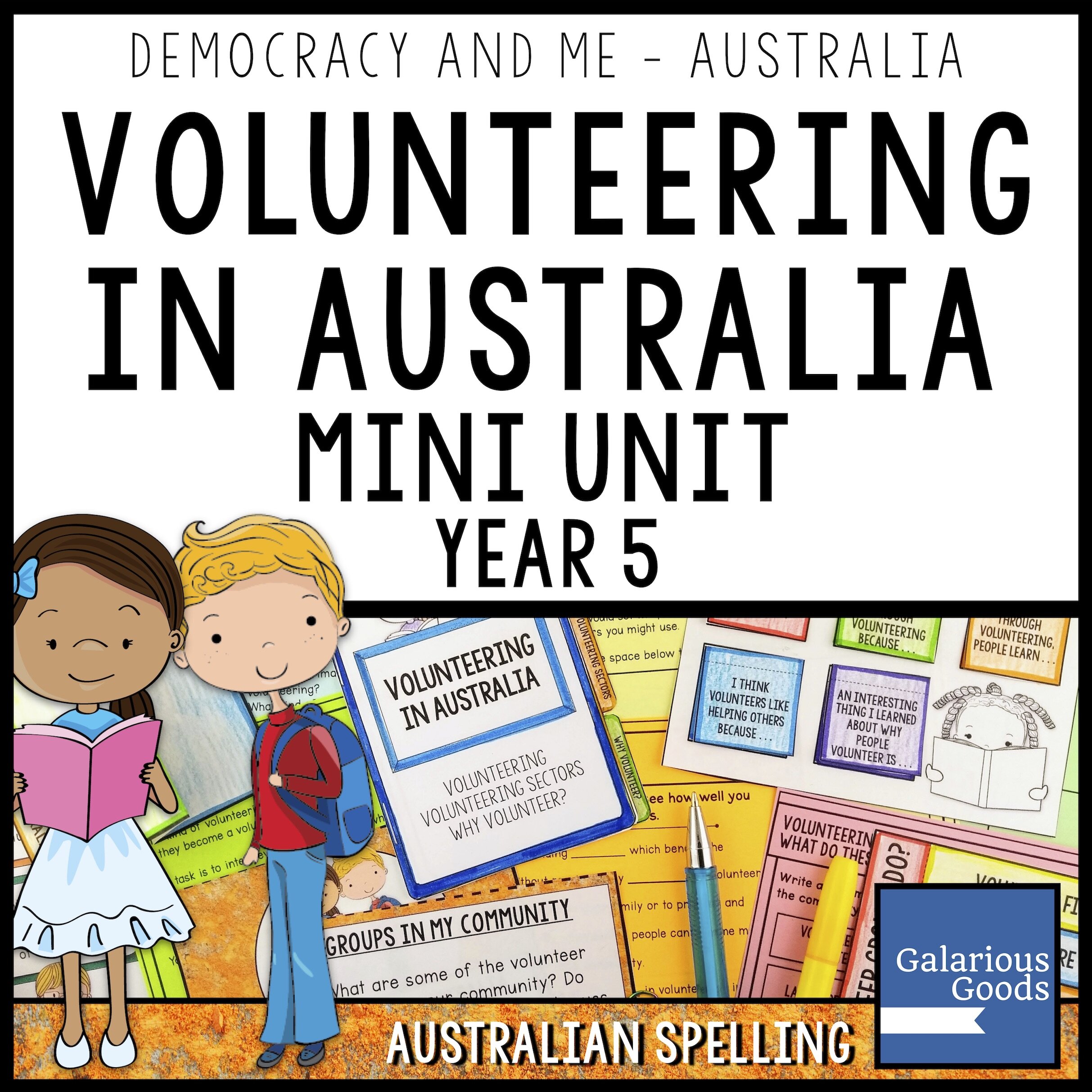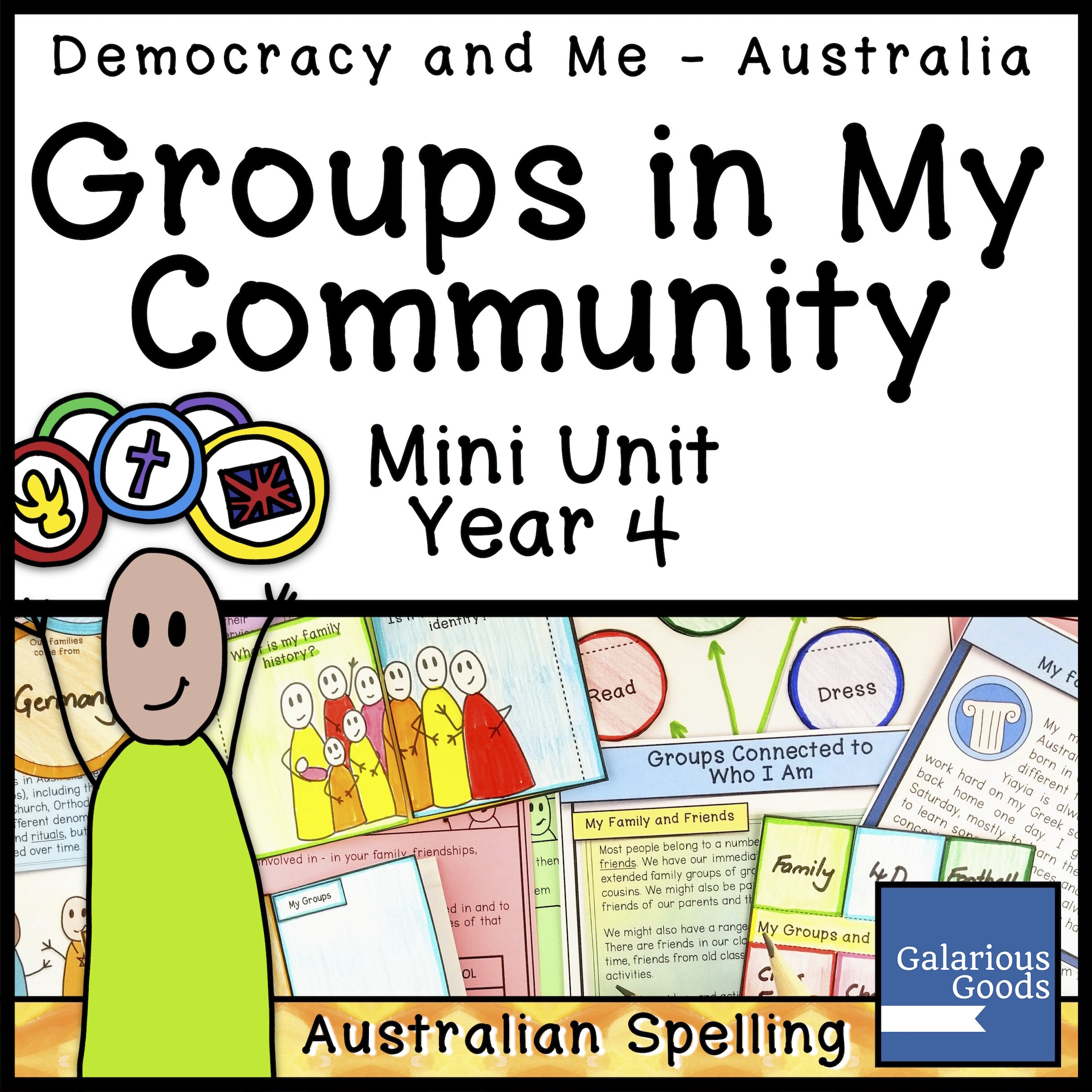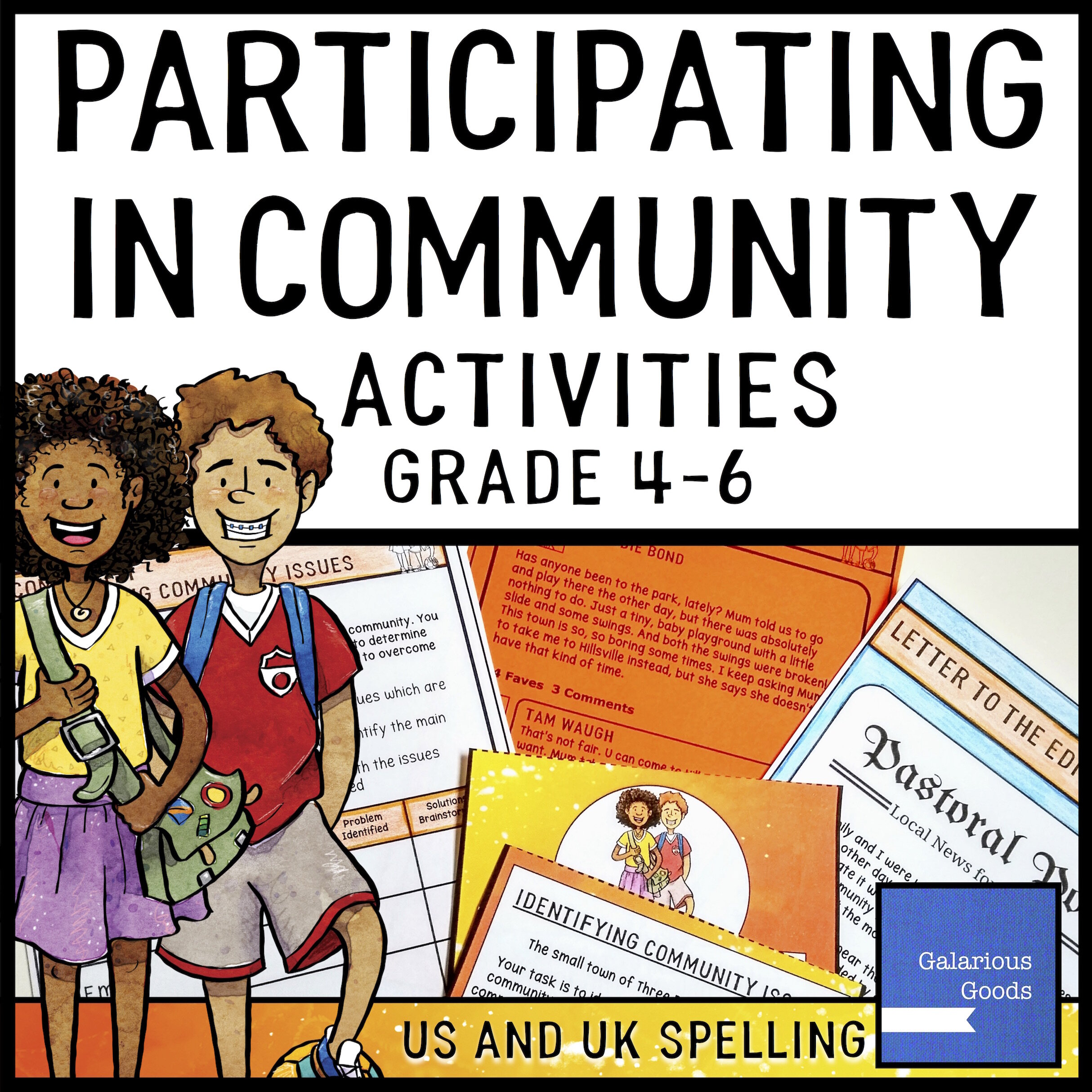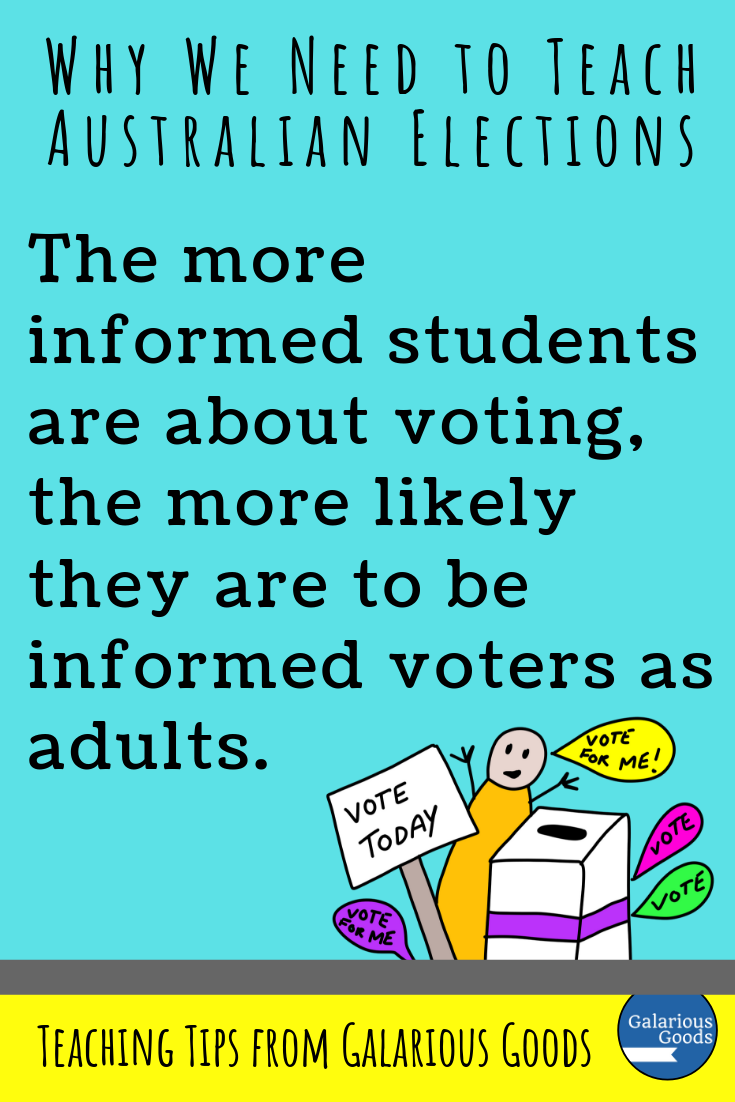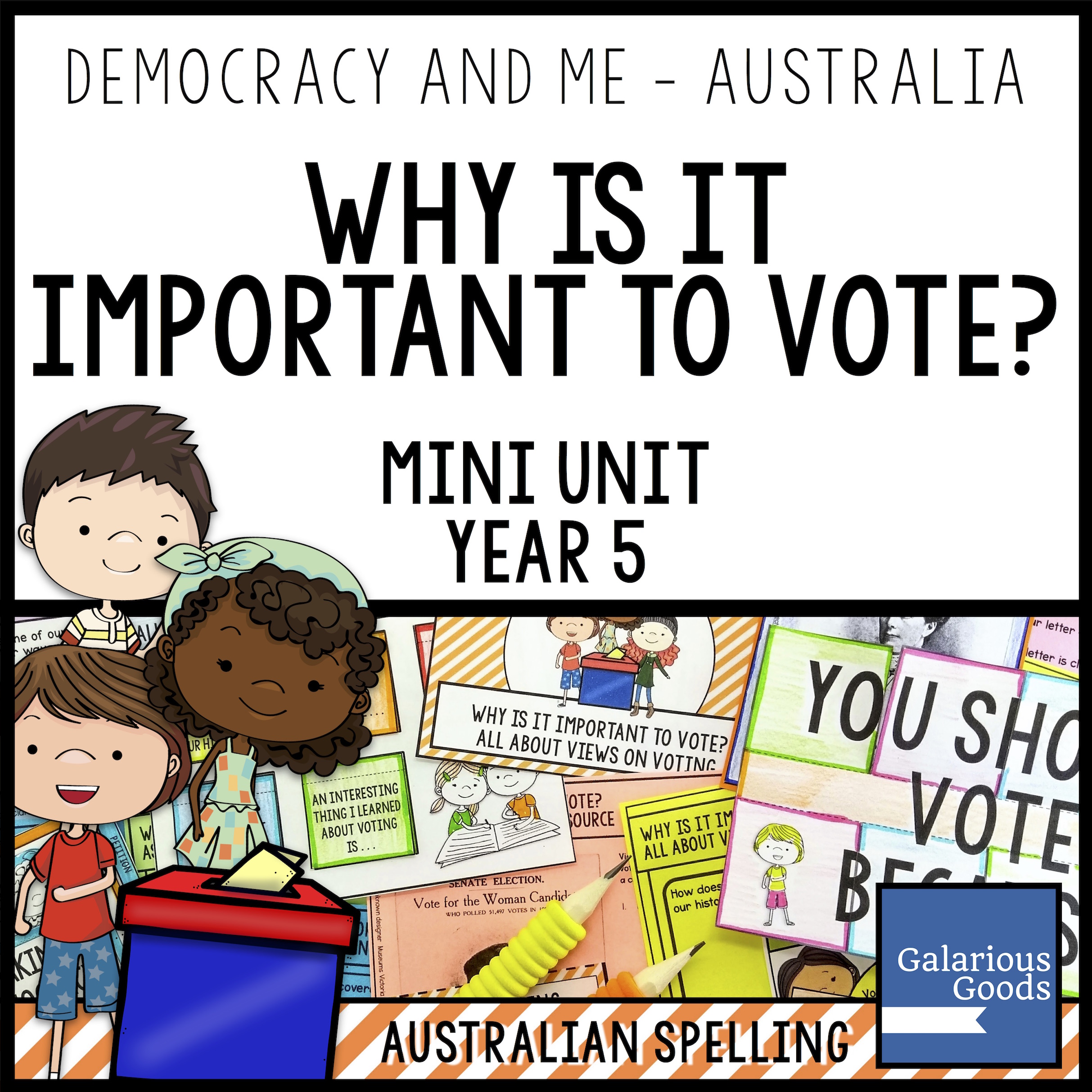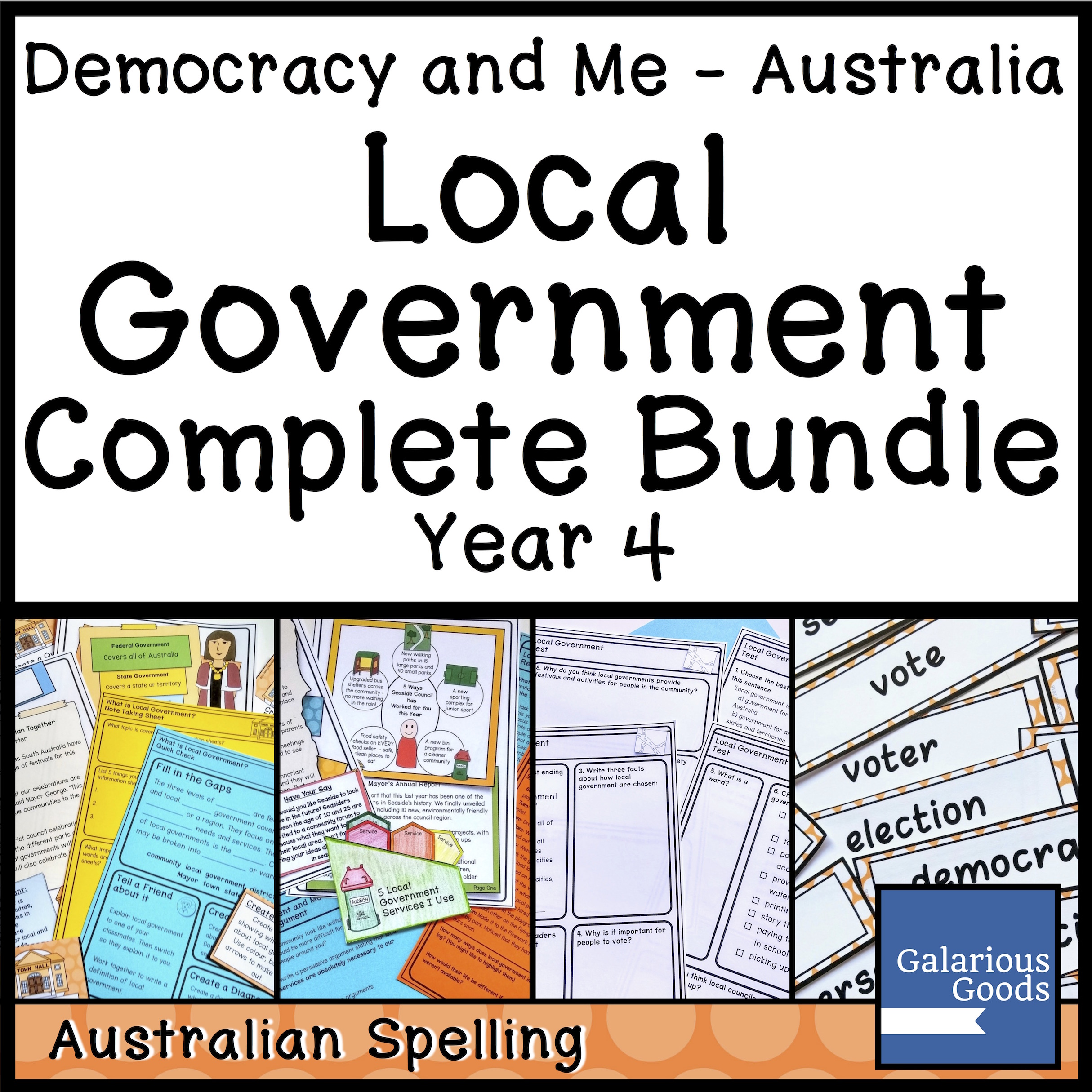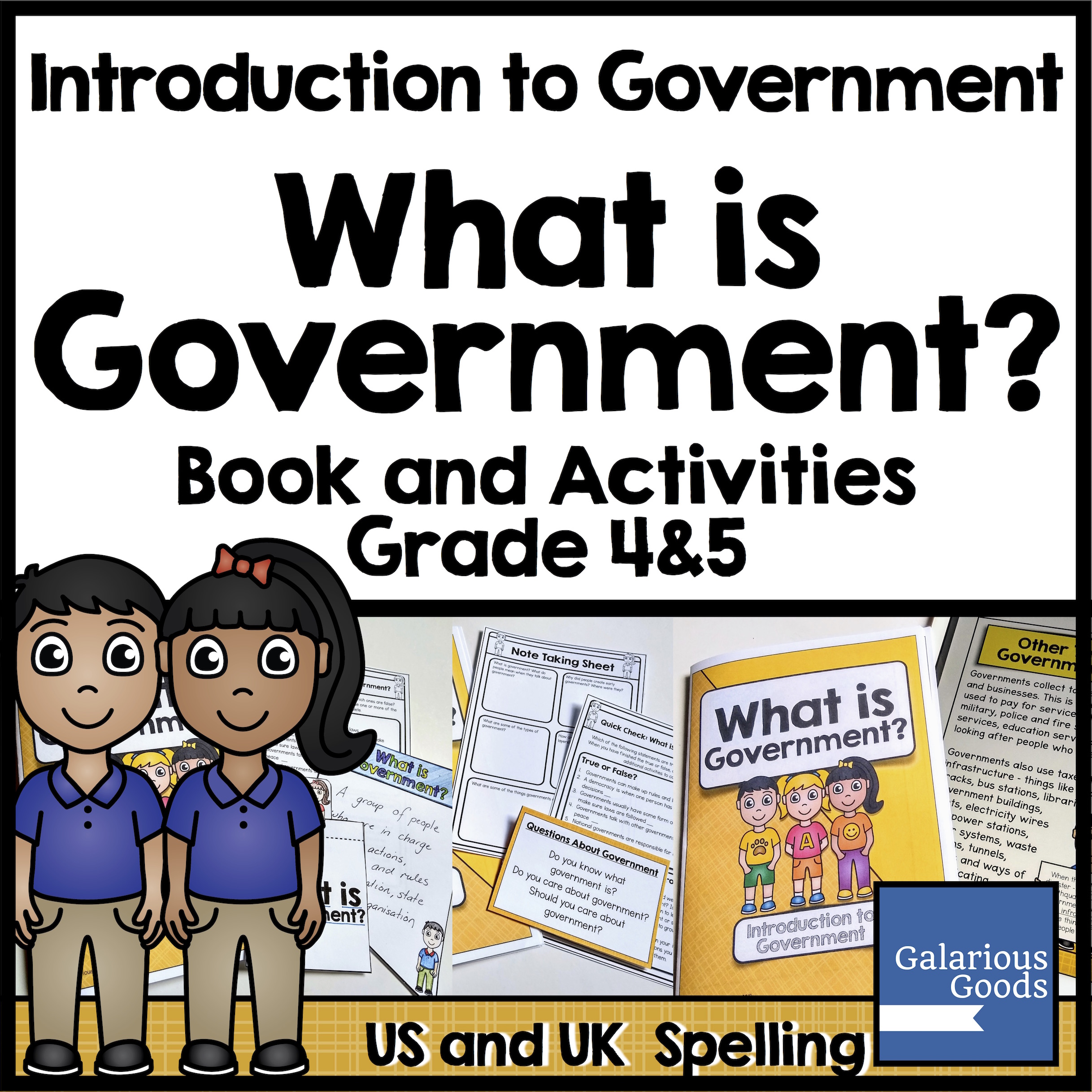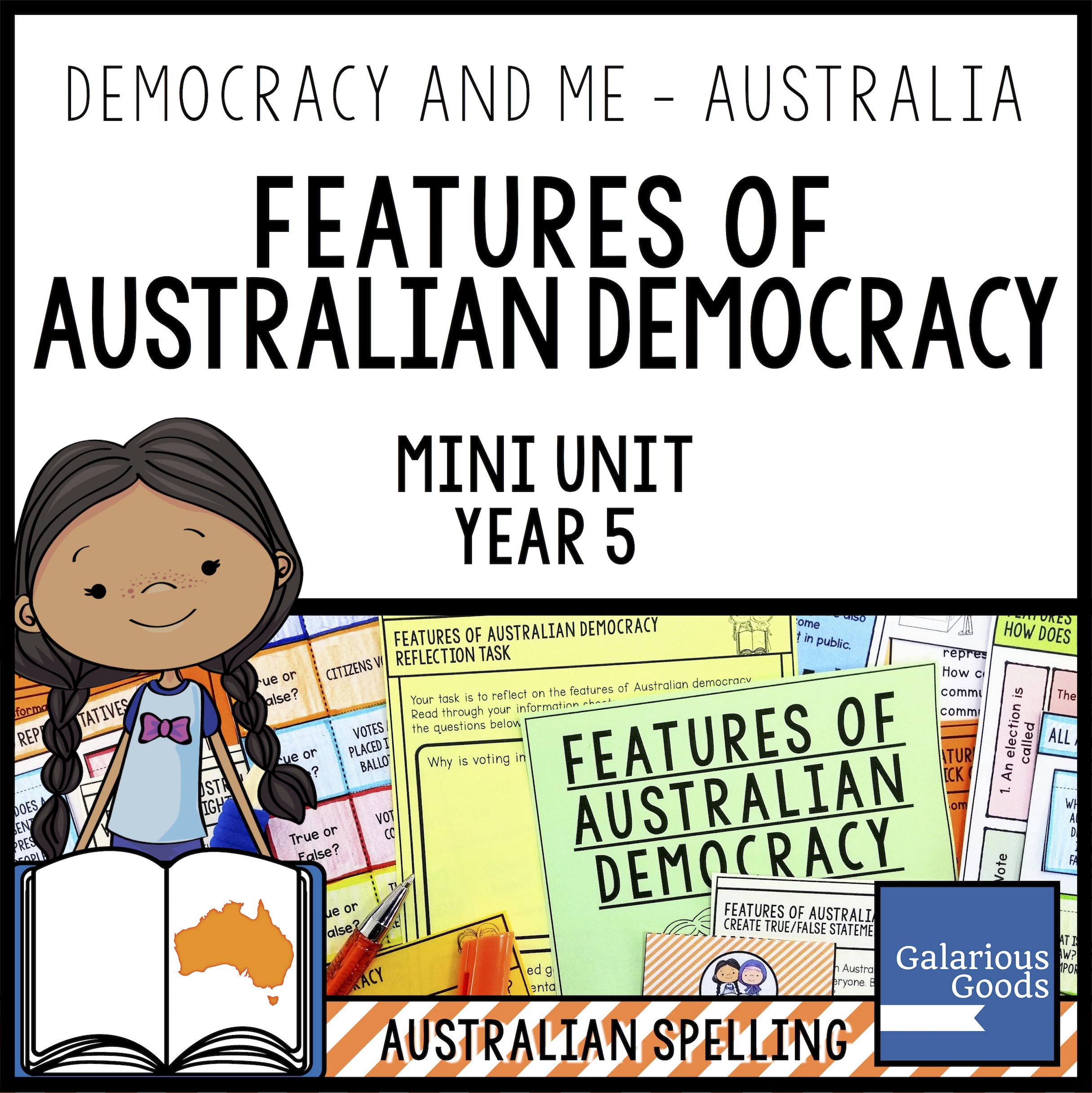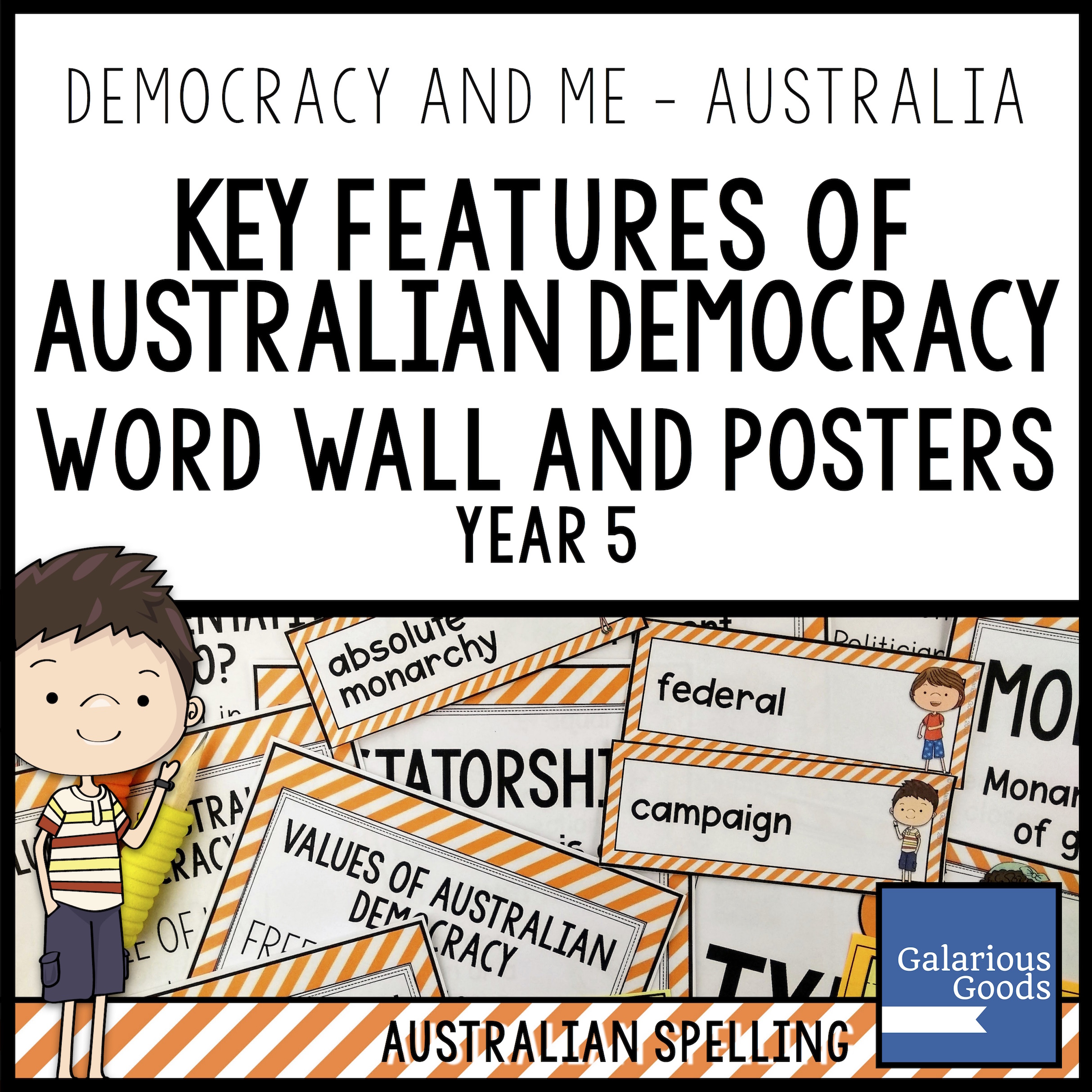4 Activities for Exploring Democratic Decision Making in the Classroom
/Democratic decision making is one of the early concepts students come across as they learn about civics and citizenship. It’s an important concept - one which is used in government and community organisations and even to make playground decisions - so here’s some different and fun ways you can bring it alive in your classroom.
What is Democratic Decision Making?
Democratic decision making happens when a group of people work together to ensure everyone has a say on the decisions being made. This means everyone gets an equal change to share their opinions and ideas and any votes are held in a fair manner. Democratic decision making may be written into a set of rules or may just happen when decisions are being made.
Exploring Democratic Decision Making in the Classroom
1. What Game Will We Play?
This is a great introductory activity to try when you know you are able to take students outside for a game.
Bring this activity to the students by letting them know that they’re going to have some free time to play a game outside - but only if they can decide which game the class will play in a fair way. At this point, some classes may be fine to engage in discussion and negotiations and to work out the fairest (and most democratic) way to make a decision. Other classes may need scaffolding around what fair looks like, or help brainstorming ways they can make a fair decision.
When students have chosen the game, ask them to explain why they made a fair decision. Then you can take them out to play!
Follow up activity: Revisit the activity and the steps they took to make a fair decision. You may like to ask students to think of any other strategies they could have used. Ask students to create ‘Fair Decision’ posters to help other students to make decisions together.
2. Compare Fair and Unfair Ways of Voting
Most students engaging with civics will have had some experience of voting - either as part of classroom activities or for data collection in maths. If students haven’t experienced voting, or they’re unsure of the concept, you may like to organise a quick vote to demonstrate.
Present students with a range of scenarios showing fair and unfair ways of holding a vote. Unfair votes could include only some people being allowed to vote; certain people having to complete tasks before they can vote (like running around the oval 10 times or standing on one leg to vote); or some people getting more than one vote. Fair voting scenarios might include everyone getting one vote; voting questions being clear and easy to understand or votes being secret. Ask students to organise the different scenarios into fair and unfair ways of voting and ask them to explain their decisions - this could be a great small group or whole class activity.
When students have organised the scenarios, they may like to discuss why voting should be fair - what the benefits of a fair vote are.
Follow up activity: Ask students to write rules for a fair vote. When students have written rules, they might like to try out some - either within the class, with another class in the year level or with a buddy class.
3. Invite a Guest Speaker to Talk About Democratic Decision Making
Inviting guest speakers into the classroom is a great way to engage with a topic. Many people in community organisations engage in democratic decision making and can explain the different ways they do that to the class.
If your school has a parents association - a P and C or P and F, this may be a great place to start. The President of the P and C would be able to explain how they became president and the way that decisions are made when they’re at a meeting. Similarly, members of community groups such as the Lions or Rotary may be able to discuss the decision making processes at their meetings.
Alternatively, you might like to invite one of the local elected representatives - especially if you can work with different classes within the school so they can talk on a range of topics. Elected representatives are elected on a vote and participate regularly in voting. They also have different methods to make sure all the representatives have a say as well as the people who they represent.
Follow up activity: Ask students to investigate ways of running a meeting and to develop their own rules for running a meeting.
4. Encourage Students to Have a Say
When my daughter was in kindergarten, her class was very concerned about litter in the local park. Their teacher helped them to express their concerns in drawings and paintings and they worked together to write a letter to the local council. A local councillor then came to visit them and to talk about little and what the council and individuals could do to help. This was a fabulous exercise in even the youngest students getting to have a say about an issue which concerned them.
Ask your students what they are concerned about and discuss who they could talk to about it. Brainstorm and reflect on the best ways to have a say - whether it’s attending a local meeting or writing a letter to a local representative (or even the Principal if it’s a school concern). Let students know that having a say doesn’t always mean something will be done about it, but it does let people who hold positions of power know that it is something which is important within their community.
Follow up activity: Investigate different notable people around the world who have had a say about things which are important to them.


